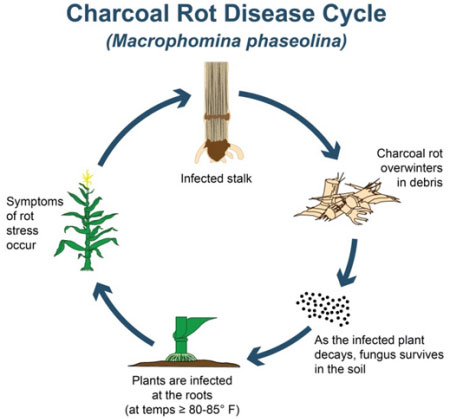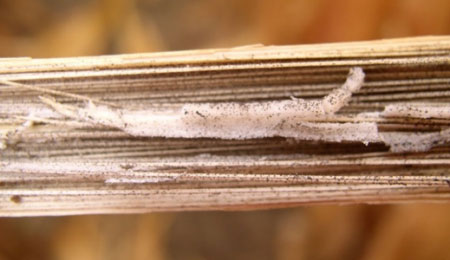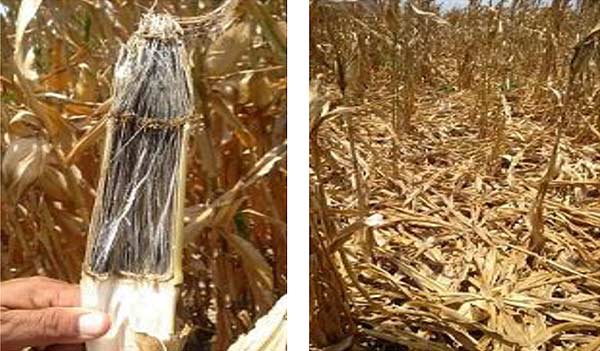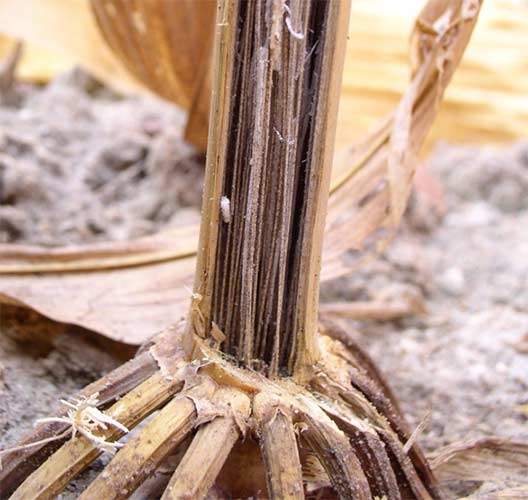Charcoal Rot in Corn

Crop Focus
From Pioneer Agronomy Sciences
Environments Favoring Charcoal Rot
- Hot dry conditions: Temperatures over 85 ºF and low soil moisture favor disease proliferation. A long cold weather period followed by hot conditions will allow previously infected corn residue to be preserved on the ground over the winter, keeping the spores intact on the stalk and moving to new hosts in the spring time.
- Drought conditions: Specifically when corn is senescing, water loss causes stress on the crop that makes it highly susceptible to infection.
- Tillage practices: Populations of charcoal rot fungus will increase in the soil when the susceptible hosts are cropped in successive years and can be spread by tillage (Wylie, 1988) as the fungus can persist in the soil up to three years.
- Insect damage and plant wounding: Plants with openings caused by insects or environmental damage are more susceptible to fungal infection.
The foregoing is provided for informational use only. Please contact your Pioneer sales professional for information and suggestions specific to your operation. Product performance is variable and depends on many factors such as moisture and heat stress, soil type, management practices and environmental stress as well as disease and pest pressures. Individual results may vary.

Find the Right Product for Every Acre
The best genetics, top trait packages and extensive local field knowledge combine to deliver new products with proven performance consistency across years and environments. Use Pioneer® brand corn products to maximize yield potential on every acre.
Find Local Products


